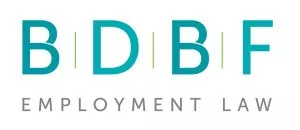Today, 18 November 2021, has been declared by the Fawcett Society as “Equal Pay Day”, i.e. the point in the year at which women on average stop earning, relative to men, because of the gender pay gap. Despite increasing awareness of the issue, the gender pay gap increased in 2021 from 14.9% to 15.4% and remains a key concern in gender inequality. To address the issue, this year the Fawcett Society is running a campaign to #EndSalaryHistory.
In this article, we explain the concept of equal pay and the gender pay gap, consider this campaign, and outline some practical steps employees and employers can take to address the issue.
The law
It has been over 50 years since the first legislation was introduced to address inequality in pay between men and women in the form of the Equal Pay Act 1970. The principle of equal pay for equal work for men and women is now regulated by the Equality Act 2010.
In summary, the legislation states that employees (i.e. those under a contract of service, apprenticeship or who are contracted personally to do work) are entitled to receive contractual terms which are no less favourable than a comparator of the opposite sex. The comparator must be an employee in the same employment, or a previous employee in the same employment, doing work which is comparable. This will be the case where the comparator is employed to do “equal work” which is either like work, work rated as equivalent, or work of equal value. This applies not only to pay, but to certain benefits as well. An employer may still be able to justify a distinction in pay between comparators because of a “material factor” – for example, seniority, length of service, or different levels on a pay scale.
Separately, employers (who employ 250 or more employees) are obliged to report on their gender pay gap annually. However, as a result of the pandemic this requirement was deferred in 2020 to October of this year.
Whilst the concepts of equal pay and the gender pay gap are often referred to synonymously, they are different concepts. Equal pay compares individuals who perform equal work, and the gender pay gap compares average earnings (salary and bonuses) of men and women across an organisation.
Despite an initial uptick in gender pay issues and coverage after the introduction of gender pay gap reporting, the reality is that it remains a novel concept, with compulsory reporting having only been introduced recently in April 2017 in the private sector and March 2017 in the public and voluntary sector with the first reports for the private sector published in April 2018.
Why is it so difficult to close the pay gap between men and women?
The reality is that in the absence of proactive steps by employers, pay disparity continues to be perpetuated year on year. Indeed, when employers are asked how they determine pay for new recruits, many would say that this is based on market standards and how much the individual earned in their previous role. One of the most common interview questions is “how much do you earn currently?”. What may seem like a reasonable and harmless enquiry unfortunately perpetuates the historical disparity in pay between men and women.
Statistics also reveal that women are far less likely to negotiate for higher salaries when moving jobs as men in the same position. Employers are also less inclined to offer women higher salaries than what they have earned previously.
This is the motivation behind the Fawcett Society's campaign #EndSalaryHistory, which asks that employers stop asking how much potential recruits earned historically when benchmarking their pay going forward, to put an end to historical discrepancies and put women on an even footing.
This is one, sensible, way of addressing the issue at high level and in our view this type of widescale cultural change is ever more required in light of the disproportionate implications of the pandemic on women.
As many employers move towards a more flexible working regime, there are concerns that this will only increase the lack of transparency in women's pay. The Fawcett Society's data shows that the majority of working women do not know whether they are being paid less than a male comparator and only 3 out of 10 believed that their employer would tell them the answer if they asked.
Working from home also means that women will become more isolated, less likely to have a sense of what colleagues are being paid or to be able to discuss it and may not feel confident to challenge pay inequality on their own. Just last week, The Guardian published an article entitled “[w]omen working from home risk being caught in a ‘she-cession'”, and noted that more men were returning to the office. This places women at a disadvantage as they are “out of sight, out of mind” and may be overlooked when it comes to promotions, bonuses and pay increases.
What can individual employees do to address issues of gender inequality in pay?
A woman who suspects that a male colleague who is performing equal work is receiving more favourable terms may have an equal pay claim (and vice versa), and/or a claim in sex discrimination against her employer. Below are some practical tips in that scenario:
- If you think you have a claim, it is important to gather information that supports your position. You could ask your colleagues about their terms to identify a pay disparity. Confidentiality around pay and benefits does not apply if you're asking for this purpose.
- Alternatively, you could ask your employer directly.
- You could submit a questionnaire to your employer to help determine whether you have a claim, by asking questions about the comparators you have identified, how pay is determined and whether the job descriptions of the comparators provide any explanation for a difference in pay. Whilst this is no longer a statutory process, there is nothing to stop you asking your employer to respond voluntarily and equal pay questionnaires remain a useful tool in determining whether any equal pay claim has good prospects of success.
- Another useful way of gathering information is to look at your employer's advertisements for the same or similar roles, and whether salaries and benefits are in accordance with what you receive.
What can employers do to address issues of gender inequality in pay?
- Be proactive – Addressing pay imbalances is not something employers should be considering once a year when they are preparing their gender pay gap report. When recruiting, refrain from asking for information about current salary and benefits.
- Be transparent – provide honest and frank information to new recruits about pay scales and/or pay range for the role and the factors which would be used in determining pay. Transparency around pay scales more generally also assists employers in closing the gap in pay and ensures women have the correct information about pay scales for their role.
- Be open to negotiation – where women ask for a higher salary in the recruitment process, consider this request openly and carefully before rejecting it out of hand..
- Join the campaign – The Fawcett Society's campaign challenges employers to commit to tackling the issue head-on and they provide a helpful toolkit here.
The content of this article is intended to provide a general guide to the subject matter. Specialist advice should be sought about your specific circumstances.



